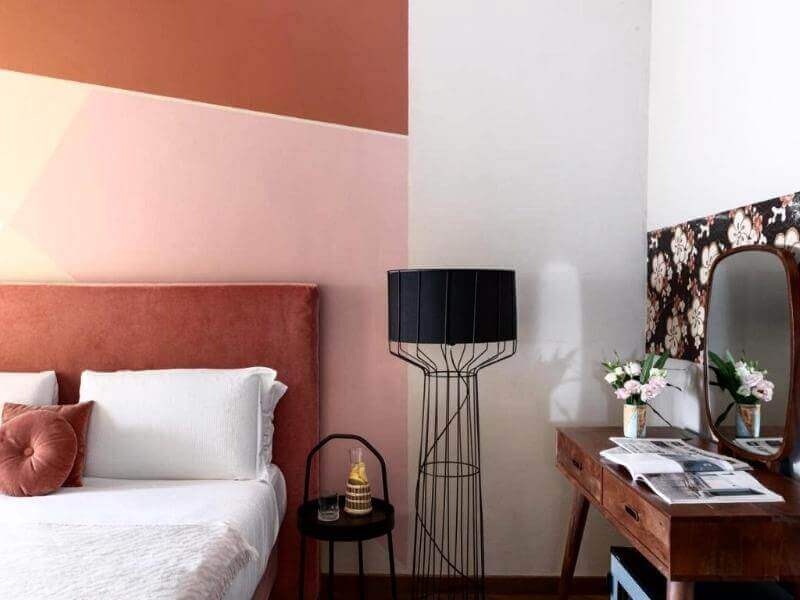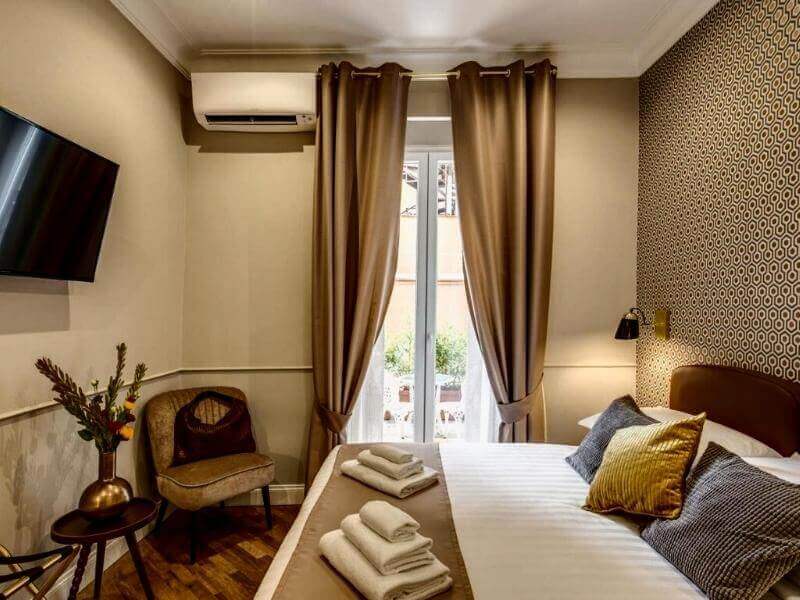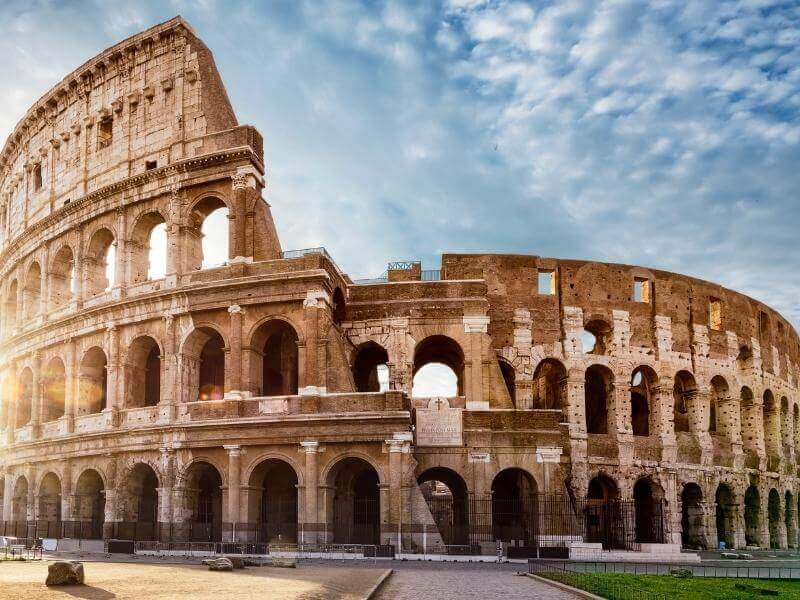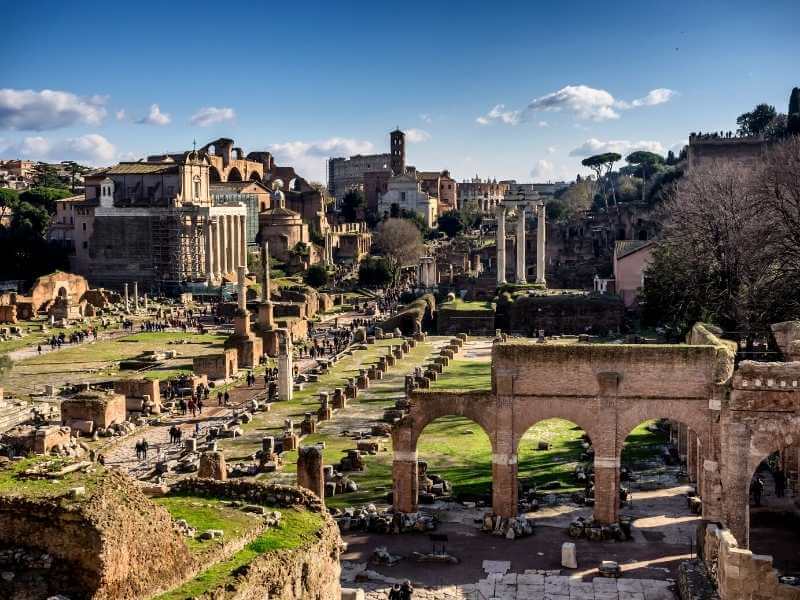The Baths of Caracalla in Rome - Terme di Caracalla
Home » Attractions » Baths of Caracalla
| DE

- - Updated on
The Baths of Caracalla were the second largest in Rome and are another highlight of Rome’s attractions, not least because of their enormous dimensions.
The considerable bathing complex was inaugurated by Emperor Caracalla in 216 AD and served the Romans as a place of recreation and for daily washing and bathing until 537 AD.
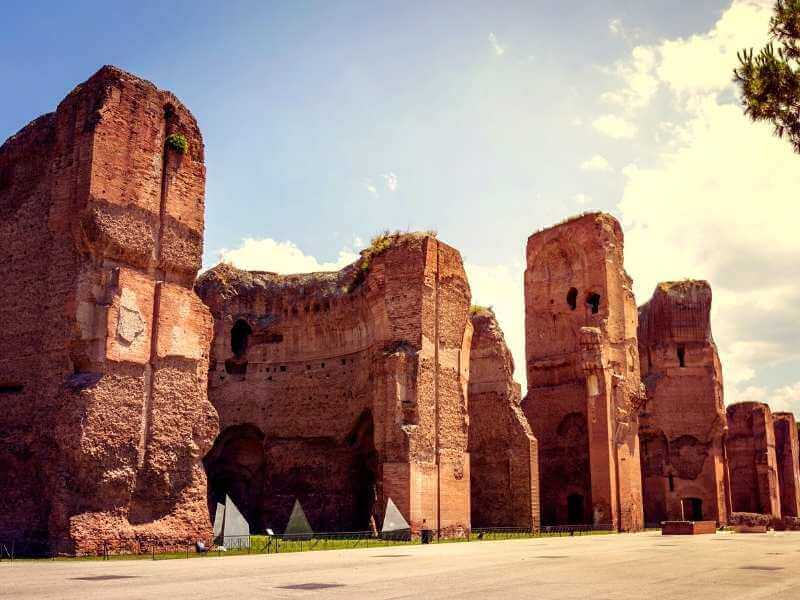
According to estimates, around 9,000 workers were employed daily to complete the short construction period of 5 years.
However, the entire building was only fully completed a few years later, around 235, when countless floor and wall decorations, sculptures, etc., were added.
What were the largest baths in ancient Rome?
- Baths of Diocletian
- Baths of Caracalla
- Baths of Nero
- Baths of Titus
- Baths of Trajan
Visitor Information:
Address:
Viale delle Terme di Caracalla, 00153 Roma
Transportation:
Subway stop: Circo Massimo, line B.
Buses: 118, 160 and 628.
Recommended exploration time:
1-2 Stunden
Nearby:
Circus Maximus (1,0 km)
Palatine Hill (0,8 km)
Colosseum (1,1 km)
Roman Forum (1,2 km)
San Giovanni in Laterano (1,3 km)
Opening hours:
January 2- February 15: 09:00 a.m. – 4:30 p.m.
February 16 – March 15: 09:00 a.m. – 5:00 p.m.
February 16 – March 15: 09:00 a.m. – 5:00 p.m.
March 16 to last Saturday in March: 09:00 – 17:30 p.m.
Last Sunday in March to August 31: 09:00 – 19:15
September 1 to September 30: 09:00 – 19:00
October 1 to last Saturday in October: 09:00 – 18:30
Last Sunday in October to December 31: 09:00 – 16:30
Always closed on Monday afternoons from 2 pm! 01.01 and 25.12 closed!
Our Tip:
With the Rome Turbopass you get free entry to the Baths of Caracalla, the Pantheon, the Colosseum, St. Peter’s Basilica, the Roman Forum & Palatine Hill, as well as priority entry to the Vatican Museums & the Sistine Chapel!
History of the Origins of the Baths of Caracalla
The Baths of Caracalla are the most magnificent bathing complex of antiquity. With their rectangular layout, typical of thermal baths at the time, the Roman builders created a gigantic oasis of well-being covering around 15 hectares.
This makes it the second largest thermal bath in ancient Rome after the Baths of Diocletian were built 100 years later. Of the 12 public thermal baths in Rome that have come down to us today, the Baths of Caracalla were by far the most impressive.
The vast resort offered space for around 2000 Romans every day. Admission to the then ‘Thermae Antoninianae’ was free of charge! In addition to the bathing function, there were two gymnasiums, several libraries, restaurants, gardens, and a brothel.
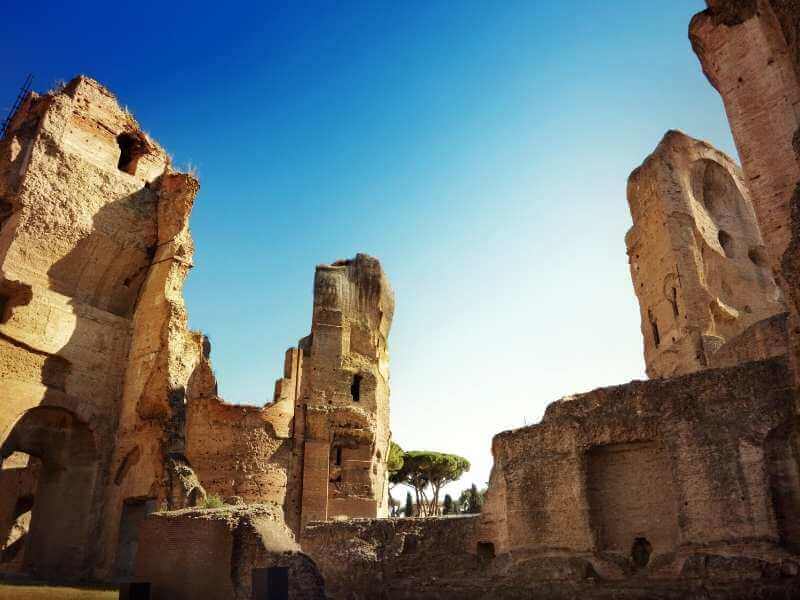
Therefore, the thermal baths were used not only for bathing and relaxation but also as a general meeting place for the Romans, as well as for learning and sports. The Caracalla Baths were extended, expanded, and restored several times in the following centuries.
After the ground plan was completed with its two floors, an extensive sewage system, underground service rooms, and numerous service tunnels, the main focus was expanding the decorative features, especially marble.
Some of these marble basins were repositioned in the center of Rome several years later. This includes a fountain that today adorns the Piazza Farnese.
In Naples’ Archaeological Museum, for example, you can see the sculpture group of the Farnese Bull from the Baths of Caracalla.
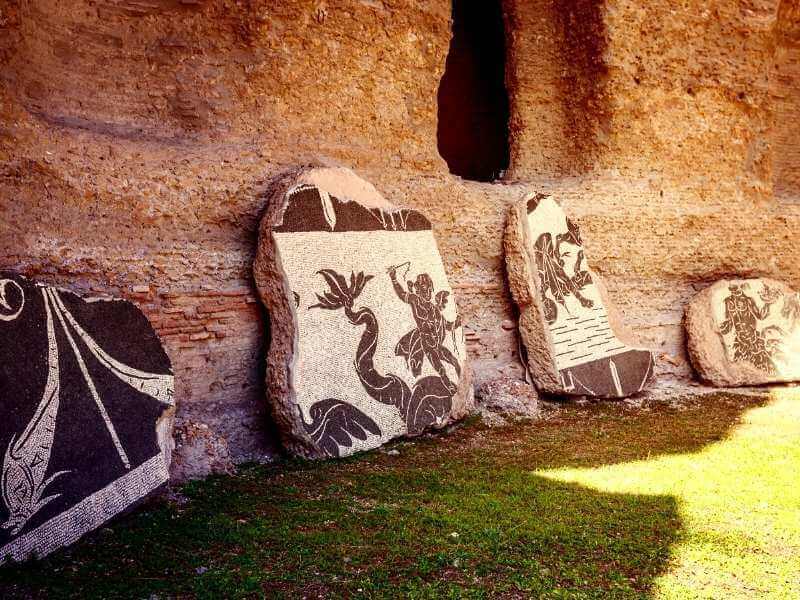
Our hotel recommendations in the center of Rome:
Have you already found accommodation?
We have researched the best hotels nearby! -> Hotels in Rome City Center
Guest reviews: 8.7 (Excellent)
Why were the Baths of Caracalla built?
The Baths of Caracalla were located in a poorer district on the outskirts of Rome. This leads to the assumption that they were built primarily to increase the popularity of the then Emperor Caracalla.
Public baths were also essential for the city of Rome. Only the wealthy citizens had the privilege of having their own bathroom in their homes. Therefore, the rest of the population had to wash and bathe in one of the free thermal baths.
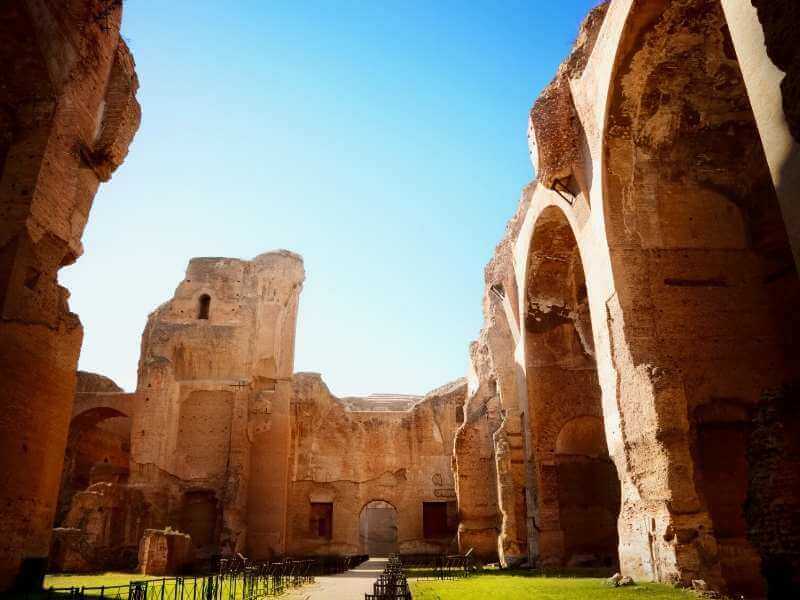
Visiting the Caracalla Baths today
Tickets to the ancient bathing complex, including an audio guide, can be booked online. Thanks to ramps, the entire area is freely accessible for wheelchair users.
You should plan an hour to visit the Caracalla Baths. However, there is no time limit for exploring the extensive grounds. The remains of the walls, some of which are still 40 meters high, and the gigantic dimensions of the ancient building leave many visitors speechless.
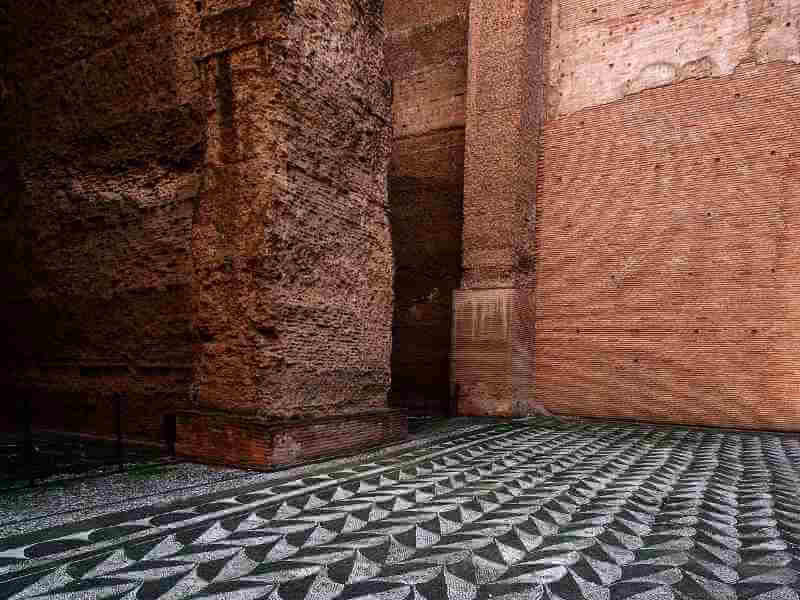
All the better that the number of tourists here, in contrast to the main attractions such as St. Peter’s Basilica, is much lower. As a result, many visitors take advantage of the pleasant expanse of the grounds and park to process their impressions and take a little breather, including a picnic.
Particularly practical: some hop-on hop-off tours in Rome stop at the Caracalla Thermal Baths, among other places.
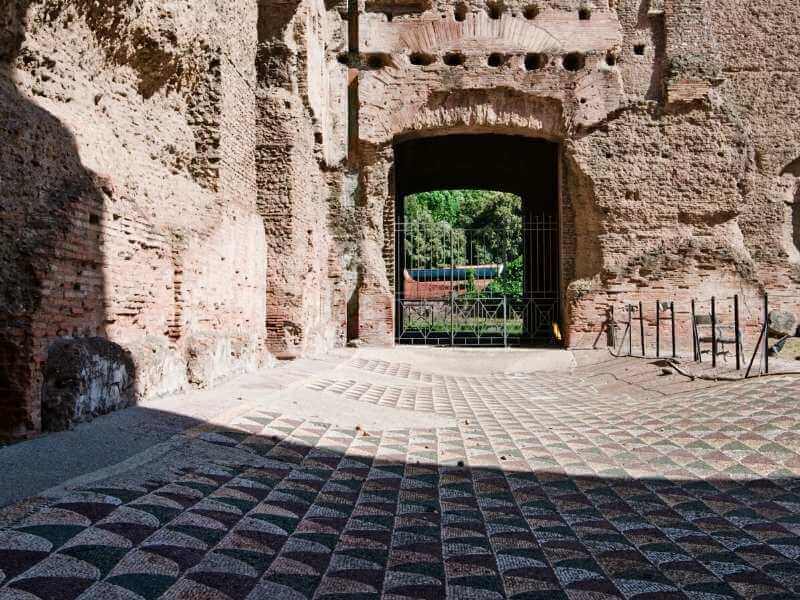
Like the nearby Circus Maximus, for example, the Baths of Caracalla also fell victim to the expansion of Rome. It is, therefore, not surprising that some of the stones were demolished in the 12th century – and rebuilt elsewhere.
Thanks to written evidence, however, many of the decorations, such as the sometimes massive columns, mosaics, marble cladding on the walls and floors, sculptures, and painted stucco work, could be reconstructed as best as possible.
Nevertheless, large parts of the architecture have yet to survive the passage of time unscathed. For example, a huge domed roof with a diameter of 36 meters (only slightly smaller than the dome of the Pantheon) adorned the entrance to the main building of the Roman baths.
The boundaries of the vast building were also surrounded by enormous walls. Nevertheless, many of the 1800-year-old stone walls and even parts of the collapsed ceilings remain today.

Caracalla Baths floor plan and bathing procedure
The structure of the Caracalla Baths follows the example of the ‘great imperial baths’ and is built as a mirror image. Men and women bathed at different times, separately from each other.
When a Roman entered the main entrance to the baths, he first found himself in a large forecourt, from which four entrances were to the main building. From there, there was a clearly structured sequence of rooms.
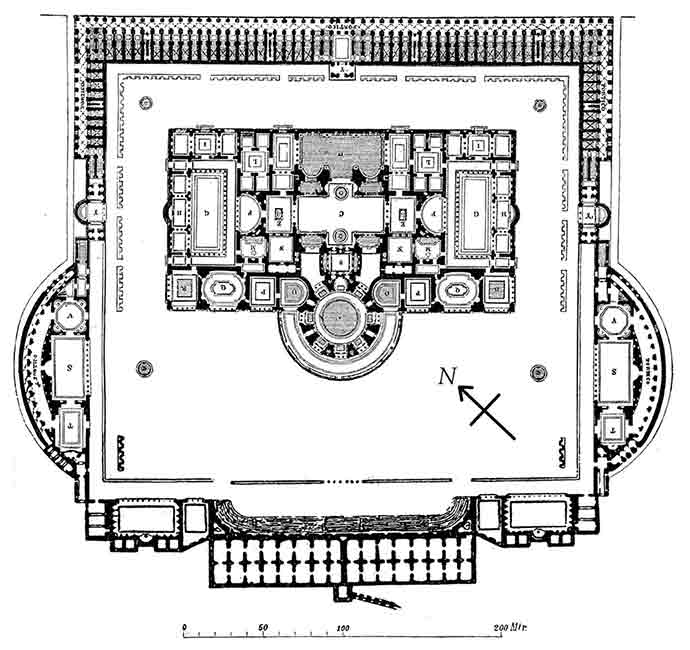
First, clothes were deposited in the changing room. Then we went on to the ‘Palaestra,’ an inner courtyard or sports field, where we warmed up with the help of some gymnastics exercises or ball sports.
After a short warm-up program, we went to the sweat bath, the ‘Sudatorium’. After this sauna visit, we moved to the ‘caldarium,’ a hot water bath. The next stop was the tepidarium, a warming room.
This was followed by another cool-down in the so-called frigidarium, the cold water pool of the Romans. This was also the largest room in the Caracalla thermal baths.
Water supply & heating of the thermal baths
Supplying the huge thermal baths with water was no easy task, so a new aqueduct was built for this purpose. This ended in a colossal cistern basin on the south side of the bathing area.
The many pools were thus connected to the cistern and could be supplied with the corresponding quantities of water under high pressure from countless lead pipes.
According to projections, 10 tons of wood were burned daily to heat the pools, floors, and walls. The entire sewage system, including its vast wood-burning ovens (around 50), is a prime example of Roman architecture.
Where are the Baths of Caracalla located in Rome?

Editor: Sebastian Erkens
Hey and welcome to Rome-Tourist! My name is Sebastian and I travel regularly to Rome, Italy.
On our Rome blog you will get valuable travel tips. If you have any questions about specific tours or sights, feel free to leave us a comment.
These articles may also interest you:

